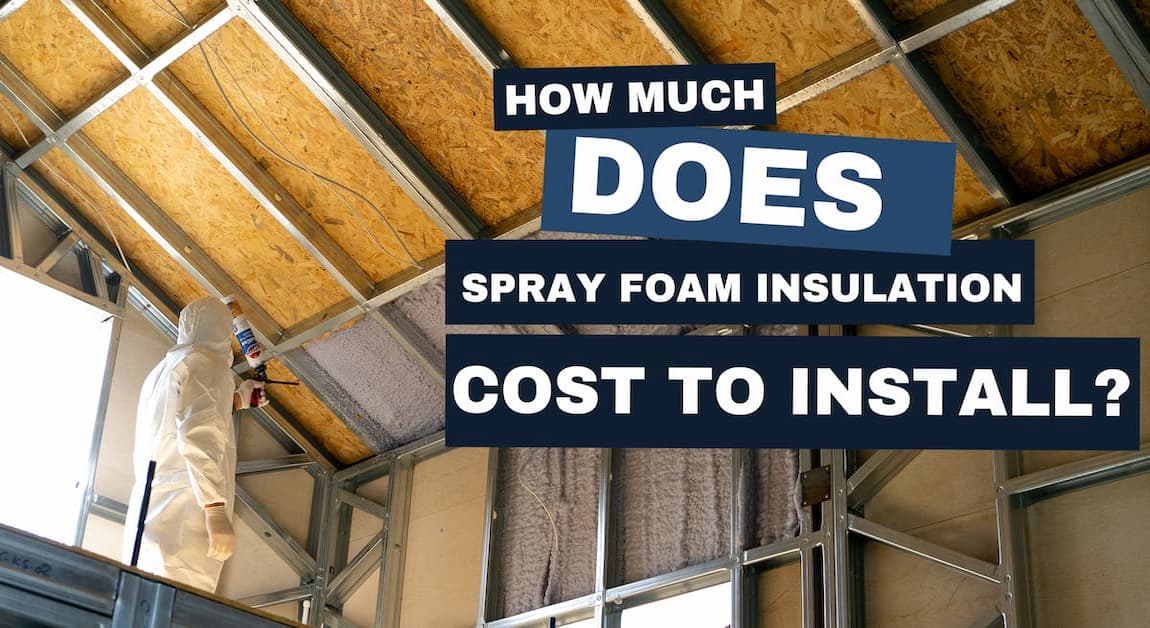How to estimate spray foam insulation?

Understanding Spray Foam Insulation
Spray foam insulation is a versatile material that expands upon application and forms an airtight seal. It is commonly used to insulate walls, roofs, attics, and crawlspaces, offering improved energy efficiency and moisture control. There are two main types of spray foam insulation: open-cell and closed-cell. Open-cell foam is more cost-effective and provides sound-dampening properties, while closed-cell foam offers higher R-value and better moisture and air infiltration resistance.
Factors Affecting Spray Foam Insulation Estimations:
Accurately estimating spray foam insulation requires consideration of several key factors:
Area to be Insulated:
Measure the area’s dimensions to be insulated, including walls, ceilings, and floors. If necessary, break down the area into smaller sections, account for any unique features, and consider Piping estimating services for pipework, ductwork, and windows.
Climate and Local Building Codes:
Consider the region’s climate and local building codes when estimating insulation. Cold climates require higher R-values for effective thermal insulation, while hot climates may prioritize heat resistance. Check local building codes for any specific requirements or restrictions.
Desired Insulation R-Value:
Determine the desired insulation R-value for the project. The R-value represents the insulation’s resistance to heat flow, with higher values indicating better insulation performance. Consult energy efficiency guidelines or local building codes to determine the recommended R-value for your region.
Type of Spray Foam Insulation:
Choose the appropriate type of spray foam insulation based on your project’s needs. Open-cell foam is typically used for interior walls or soundproofing applications, while closed-cell foam is ideal for exterior walls or areas prone to moisture.
Surface Preparation:
Ensure that the surface to be insulated is clean, dry, and free from debris. Proper surface preparation allows for better adhesion and ensures an even application of the spray foam insulation.
Overspray and Wastage:
Factor in the potential overspray and wastage that may occur during the installation process. Overspray refers to the extra foam that goes beyond the intended area, while wastage accounts for any foam that may be discarded due to improper mixing or equipment issues.
Accessibility and Obstacles:
Consider the accessibility of the area to be insulated. Difficult-to-reach spaces, intricate designs, or obstacles such as electrical wiring or plumbing may require additional time and material to complete the insulation.
Depth of Insulation:
Determine the desired depth or thickness of the spray foam insulation. Thicker insulation provides better thermal performance but requires more material. Refer to manufacturer guidelines or consult with insulation professionals for recommended thicknesses.
Estimating Spray Foam Insulation:
Now let’s dive into the step-by-step process of spray foam Insulation Estimating services:
Calculating the Area:
Spray foam insulation has gained immense popularity recently due to its energy efficiency and ability to provide superior Insulation Estimating services. Whether you’re a homeowner or a contractor, estimating the amount of spray foam insulation required for a project is essential to ensure accurate cost calculations and efficient material usage. This comprehensive guide will walk you through the step-by-step process of estimating spray foam insulation, considering various factors that can influence your calculations.
Measure the area’s dimensions to be insulated in square feet. Break down complex shapes into smaller sections and calculate their areas. Add all the areas together to obtain the total square footage.
Determining the Thickness:
Decide on the desired thickness of the insulation. Consider the insulation type, climate, and recommended R-value to determine the appropriate thickness. Multiply the square footage by the chosen thickness to calculate the volume in cubic feet.
Adjusting for Overspray and Wastage:
Consider the overspray and wastage factors discussed earlier. Apply a wastage factor (typically 10-20%) to the calculated volume to account for potential losses. Add this adjusted volume to your estimation.
Incorporating R-Value Requirements:
Based on the desired R-value and the insulation type, you can determine the number of inches required to achieve the desired level of insulation. Check the manufacturer’s specifications to find the R-value per inch for the chosen spray foam insulation. Divide the desired R-value by the R-value per inch to calculate the additional insulation required.
Importance of Proper Insulation Estimations:
Proper insulation estimations are crucial for several reasons. Let’s explore the importance of accurate estimations when it comes to spray foam insulation:
Energy Efficiency and Cost Savings:
Accurate Insulation Estimating services help apply the right amount of spray foam insulation to achieve the desired thermal performance. Properly insulated buildings experience reduced heat loss or gain, improving energy efficiency. By minimizing air leaks and thermal bridging, spray foam insulation helps reduce the energy required for heating and cooling, leading to significant cost savings on utility bills over time.
Comfort and Indoor Air Quality:
Effective insulation creates a comfortable indoor environment by regulating temperature and reducing drafts. Accurate estimations ensure that the insulation meets the recommended R-value for the specific climate, providing optimal thermal comfort. Additionally, spray foam insulation forms an airtight seal, reducing outdoor pollutants, allergens, and dust infiltration. It improves indoor air quality, creating a healthier and more pleasant living or working environment.
Long-Term Performance and Durability:
Proper insulation estimations contribute to the long-term performance and durability of the insulation system. Applying the correct amount of spray foam insulation ensures that the desired thickness and coverage are achieved, enhancing the insulation’s effectiveness and longevity. Insufficient insulation may lead to thermal gaps or compromised performance, while excessive insulation can result in unnecessary material waste and added costs. Accurate estimations help strike the right balance for optimal performance and durability.
Compliance with Building Codes and Regulations:
Building codes and regulations often dictate specific insulation requirements to meet energy efficiency standards and ensure occupant safety. Proper insulation estimations help ensure compliance with these codes, preventing potential issues and delays during inspections or future renovations. By adhering to local building regulations, you can avoid penalties and legal complications while also maintaining the value and marketability of the property.
Environmental Impact:
Efficient insulation reduces energy consumption, lowering greenhouse gas emissions associated with heating and cooling systems. By accurately estimating spray foam insulation, you can minimize the use of materials and reduce waste. It contributes to a more sustainable and eco-friendly construction approach, aligning with the broader goals of environmental conservation and reducing carbon footprints.
Overall, proper insulation estimations for spray foam insulation play a vital role in achieving energy efficiency, cost savings, comfort, indoor air quality, long-term performance, compliance with regulations, and environmental sustainability. By investing time and effort in accurate estimations, you can optimize the benefits of spray foam insulation and create a more efficient, comfortable, and environmentally responsible living or working space.
Conclusion:
Estimating spray foam insulation is crucial to ensure accurate cost calculations and efficient material usage. By considering factors such as area, climate, desired R-value, type of Insulation Estimating services, and other variables, you can estimate the amount of spray foam insulation needed for your project. Remember to account for overspray, wastage, and any local building codes or specific requirements. If in doubt, consult with our Nedes Estimating insulation professionals, that can provide expert guidance and ensure a well-insulated, energy-efficient space.





